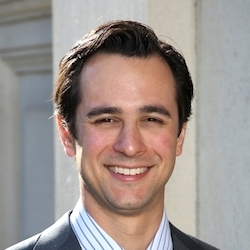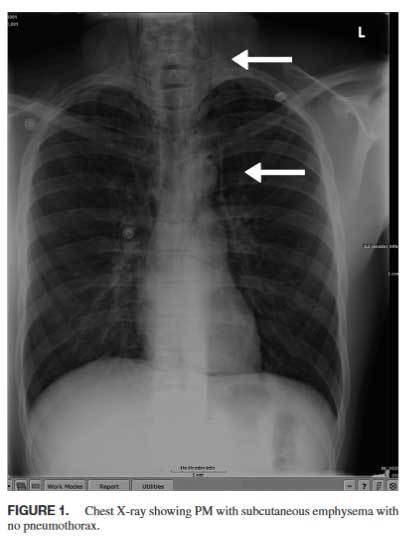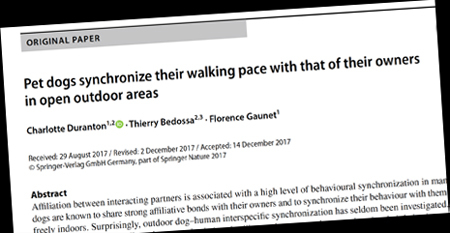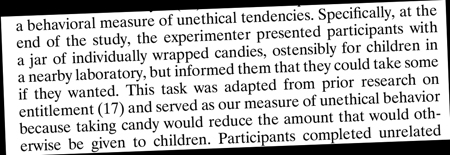Marc Abrahams's Blog, page 199
December 28, 2017
Caroline’s Christmas, forgotten again
 This Christmas we forgot, as we do every year, to publish Stephen Leacock’s “Caroline’s Christmas, or the Inexplicable Infant.” Here, three days late, is a snippet:
This Christmas we forgot, as we do every year, to publish Stephen Leacock’s “Caroline’s Christmas, or the Inexplicable Infant.” Here, three days late, is a snippet:
“…The Old Homestead was mortgaged! Ten years ago, reckless with debt, crazed with remorse, mad with despair and persecuted with rheumatism, John Enderby had mortgaged his farmstead for twenty-four dollars and thirty cents.
To-night the mortgage fell due, to-night at midnight, Xmas night. Such is the way in which mortgages of this kind are always drawn. Yes, sir, it was drawn with such diabolical skill that on this night of all nights the mortgage would be foreclosed. At midnight the men would come with hammer and nails and foreclose it, nail it up tight.
So the afflicted couple sat.
Anna, with the patient resignation of her sex, sat silent or at times endeavoured to read. She had taken down from the little wall-shelf Bunyan’s Holy Living and Holy Dying. She tried to read it. She could not. Then she had taken Dante’s Inferno. She could not read it. Then she had selected Kant’s Critique of Pure Reason. But she could not read it either. Lastly, she had taken the Farmer’s Almanac for 1911. The books lay littered about her as she sat in patient despair….
We recommend, though, that you read the entire story—read it aloud, to gathered family, perhaps your own.

Audio-Based Caricature Exaggerations (new patent)
‘Caricaturization’ (the act of making a caricature of someone/something) can now be performed automatically – and not only that, it can be set to music. Matan Sela and colleagues at Prof. Ron Kimmel’s Geometric Image Processing Lab, Technion – Israel Institute of Technology, have developed ‘A novel caricature generation framework for surfaces’. Computer Vision and Image Understanding 141 (2015) 1–17.
“The method scales the gradient fields of the surface coordinates by a function of the Gaussian curvature of the surface, and solves a corresponding Poisson equation for finding the exaggerated shape. When a reference shape is provided, local discrepancies are used to amplify the scaling effect, while in the absence of a reference shape, the reference is assumed to be a scaled down version of the given one thereby letting the Gaussian curvature define the relative stretch.”
Their ‘caricaturization’ algorithm can also tweak the ‘caricaturization’ levels in sync with an audio input [as in the above video], a procedure for which the team have just received a US patent. See: Audio-Based Caricature Exaggeration
Note: The patent points out that the technique is not restricted to human heads – it can also be applied to animals, mythical creatures, &etc.

December 27, 2017
A switch, in the brain, to control impulsive behavior! [Medical study]
Impulsive beliefs that someone has discovered a switch, in the brain, to control impulsive behavior!
Such beliefs have impelled many scientists (professional, amateur, and imagined) to report that they have maybe, perhaps, almost-certainly, nearly-without-doubt discovered a switch, in the brain, to control impulsive behavior.
 A newly published study suggests that a team of scientists has discovered the switch.
A newly published study suggests that a team of scientists has discovered the switch.
The study is: “Closing the loop on impulsivity via nucleus accumbens delta-band activity in mice and man,” Hemmings Wu, Kai J. Miller, Zack Blumenfeld, Nolan R. Williams, Vinod K. Ravikumar, Karen E. Lee, Bina Kakusa, Matthew D. Sacchetc, Max Wintermark, Daniel J. Christoffel, Brian K. Rutt, Helen Bronte-Stewart, Brian Knutson, Robert C. Malenka, and Casey H. Halpern [pictured here], Proceedings of the National Academy of Sciences (2017): 201712214. The researchers are at Stanford University.
Corresponding author Halpern’s official biography reveals, courteously, that he “is Assistant Professor of Neurosurgery and, by courtesy, of Neurology and Neurological Sciences, and Psychiatry and Behavioral Sciences at Stanford University Medical Center.”
The experiment was performed on mice. The study reports this in simple, plain language: “Utilizing this translational biomarker as a trigger, RNS blocked binge eating in mice with remarkable behavioral specificity, thereby taking the first critical step toward the development of a targeted intervention for neuropsychiatric patients suffering from hypersensitivity to pathological motivations.”
At the end of the study, the authors explain that their discovery likely is the key to controlling undesired impulsed in humans: “Our findings provide preliminary evidence that RNS has potential for treating intractable behavioral disorders that have not previously been considered optimal candidates for neurosurgical approaches, including eating disorders, and even obesity and addiction. Undoubtedly, further work will optimize biomarkers of reward anticipation by improving their specificity and sensitivity.”
At the very end, the study mentions that there may be a small chance that the prediction might not pan out: “Nevertheless, the fact that mouse and human NAc LFPs exhibit similar changes during reward anticipation suggests that mechanistically driven research in rodents can inform what is eventually done in human subjects.”
The discovery’s announcement has not gone unnoticed. Scientific American has an appreciation, with the headline: “An Electrical Brain Switch Shuts Off Food Cravings
— Could the temptation to dish up seconds (or thirds) be curtailed with an implant under the skull?”

December 26, 2017
Deceptive-like behaviour in dogs (Canis familiaris)
Dogs are usually considered to be trustworthy pets, but a research (or perhaps research-like) study sheds light on dogs’ ability to use deceptive-like (ore perhaps deceptive) behaviour to get their way. The article “Deceptive-like behaviour in dogs” explains an experiment where
…dogs had the chance to choose, in the presence of either a cooperative or a competitive human partner, between three boxes containing either a piece of preferred food (sausage), a nonpreferred food item (dry food pellet) or an empty box. Once the dog chose which container to approach, the cooperative partner gave it the food, whereas the competitive partner took the food away.
Depriving canines a treat was enough to trigger a ‘tactical deception’ response. The dogs would lead the competitive partner, more often than chance, to the empty box. This allowed the dogs to receive the sausage later.
The results show that dogs distinguished between the cooperative and competitive partner, and indicate the flexibility of dogs to adjust their behaviour and that they are able to use tactical deception.
Bonus: Here is one recorded example of deceptive-like behaviour in a dog attempting to convince its owner that the dog has not been digging holes.

December 25, 2017
Boyband-induced breathing difficulties (new study)
“A 16-year-old female with a history of type 1 diabetes presented to the Emergency Department (ED) with shortness of breath. She denied chest pain or sore throat. She reported a sudden onset of symptoms after forceful screaming at the ‘‘One Direction’’ concert the night prior. She denied any preceding emesis, odynophagia, or cough. Her physical examination revealed tachypnea to 22 breaths/min with normal breath sounds and no respiratory distress. A Hamman’s crunch was not appreciated.”
What treatment should be provided for such a case? Emergency medicine practitioner Dr. Slaughter and colleague Dr. Roppolo of the University of Texas Southwestern Medical Center decided on oxygen therapy:
“The patient was placed on 100% O2 via nonrebreather and was admitted to the hospital for observation. After an uneventful period of observation with an unchanged repeat chest x-ray study, the patient was discharged the following day with no further visits for this problem.”
See: “Screaming your Lungs Out!” A Case of Boy Band-Induced Pneumothorax, Pneumomediastinum, and Pneumoretropharyngeum Journal of Emergency Medicine, November 2017, Volume 53, Issue 5, Pages 762–764
Also see: Caution regarding shouting “HOOAH” (study)

December 24, 2017
The Case of the Neighbor’s Cat Causing Complications
Medical detectives must keep in mind, always, the possibility that a cat entered into the chain of events that brought a human patient to seek treatment. This newly published case hints strongly at that principle:
 “The Case of the Neighbour’s Cat Causing a Symptomatic (Mycotic) Aortic Aneurysm and an Infected Endograft,” Ahmed Shalan, Nicky Wilson, Jon Poels, Anna Ikponmwosa, and Stephen Cavanagh, EJVES Short Reports, epub 2017. The authors, at York Teaching Hospital, York, UK, report:
“The Case of the Neighbour’s Cat Causing a Symptomatic (Mycotic) Aortic Aneurysm and an Infected Endograft,” Ahmed Shalan, Nicky Wilson, Jon Poels, Anna Ikponmwosa, and Stephen Cavanagh, EJVES Short Reports, epub 2017. The authors, at York Teaching Hospital, York, UK, report:
“A 69 year old female was prescribed but failed to complete a full course of co-amoxiclav following a forearm cat bite. Nine days later she was admitted with pyrexia, left flank pain, and haematuria…. Four weeks following stent graft insertion, the patient was readmitted with loss of consciousness. Imaging demonstrated an infected graft with an associated psoas abscess. The endograft was explanted and reconstruction performed with the femoral vein. Only at this point was the history of a cat bite and positive blood cultures elicited and recognised as relevant.”

December 23, 2017
Caution regarding shouting “HOOAH” (study)
“A previously healthy 20-year-old male trainee developed chest pain, shortness of breath, and neck pain after repeatedly shouting “Hooah!” during a motivational squad competition. He was found to have developed a pneumomediastinum with soft tissue crepitus of the neck. He had an uneventful recovery. Unique to the military training environment, vigorous shouting, including “Hooah!” as a motivational stimulus, can have barotraumatic consequences. The term “spontaneous” as applied to a pneumomediastinum diagnosis is examined and the auscultatory finding of “Hamman’s sign” is reviewed.“
See: “HOOAH!” A Case of Pneumomediastinum in the Military Training Environment; Hamman’s Sign 71 Years Later Military Medicine, Volume 176, Number 3, March 2011 , pp. 352-355(4)

December 22, 2017
Pet Dogs Synchronize Walking Pace With Owners [research study]
Further progress in the study of whether and how pet dogs synchronize their walking pace with that of their owners:
“Pet Dogs Synchronize Their Walking Pace With That of Their Owners In Open Outdoor Areas,” Charlotte Duranton, Thierry Bedossa, and Florence Gaunet, Animal Cognition, epub 2017. The authors, at Aix-Marseille University, AVA Association [Cuy-Saint-Fiacre], and Alfort National Veterinary School, France, explain:
“We found that dogs visibly synchronized both their location (staying in close proximity) and their activity (moving when their owner moved, and at the same pace, and standing still when their owner stood still) with those of their owners. By demonstrating that owners act as attractors for their dogs in an outdoor space, the present study contributes new data to the understanding of interspecific behavioural synchronization.”
BONUS: Here is an earlier, dog-educational video starring co-author Thierry Bedossa:

Further physics insight from walking backwards with coffee
“The authors derive their inspiration from an Ig Nobel prize-winning paper describing a basic mechanical model that investigates the results of walking backwards while carrying a cup of coffee.”
So says the report “Mathematical model reveals solution to sloshing coffee,” in Phys.org.
The Ig Nobel Prize-winning paper about walking backwards while carrying a cup of coffee was itself inspired by an earlier Ig Nobel Prize-winning paper about walking forwards while carrying a cup of coffee.

December 21, 2017
Upper-class People More Likely to Take Candy From Babies [research study]
Entitlements inspire this study of adults taking candy from babies:
“Higher Social Class Predicts Increased Unethical Behavior,” Paul K. Piff, Daniel M. Stancato, Stéphane Côté, Rodolfo Mendoza-Denton, and Dacher Keltner, Proceedings of the National Academy of Sciences, vol. 109, no. 11, 2012, pp. 4086-4091. The authors, at the University of California, Berkeley, the University of Toronto, and other institutions, report:
“at the end of the study, the experimenter presented participants with a jar of individually wrapped candies, ostensibly for children in a nearby laboratory, but informed them that they could take some if they wanted. This task was adapted from prior research on entitlement and served as our measure of unethical behavior because taking candy would reduce the amount that would otherwise be given to children…. Central to our hypothesis, participants in the upper-class rank condition took more candy that would otherwise go to children than did those in the lower-rank condition.”

Marc Abrahams's Blog
- Marc Abrahams's profile
- 14 followers








